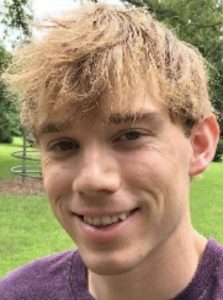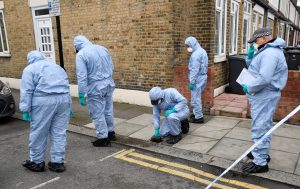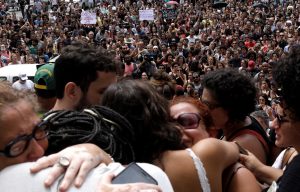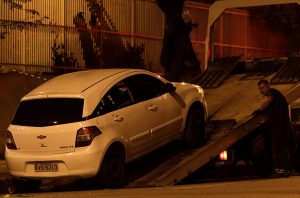
By Tim Ghianni
NASHVILLE, Tenn. (Reuters) – Nashville police on Monday arrested the suspect in the weekend killing of four people at a Waffle House restaurant, ending a manhunt that began when the gunman ran naked from the scene into nearby woods, authorities said.
Photos posted online by police showed Travis Reinking, a 29-year-old construction worker suspected of opening fire at the restaurant early Sunday, in the back of a police car. Looking disheveled, he was wearing a torn red shirt and dirty blue jeans, and had scratches on his shoulder.

Metro Davidson County Police inspect the truck of Travis Reinking, the suspected shooter, at the scene of a fatal shooting at a Waffle House restaurant near Nashville, Tennessee, U.S. April 22, 2018. REUTERS/Harrison McClary
Metropolitan Nashville police Lieutenant Carlos Lara said that as soon as a detective saw Reinking and ordered him to get on the ground, the suspect cooperated. “He did not try to run,” Lara told reporters in a news conference near the Waffle House.
The arrest ended a protracted search for the gunman, a man with a history of bizarre behavior who evaded capture for more than 30 hours after the shooting.
Police said they did not know what the gunman’s motive was in opening fire at the 24-hour chain restaurant. In addition to the four deaths, two people were injured in the attack.
“We need to move on as a community and do what we can to curb this violence,” Nashville Mayor David Briley told reporters.
Reinking, who had a handgun and ammunition in his backpack when he was arrested about two miles (3 km) from the Waffle House, immediately requested a lawyer and refused to answer questions, police said. He will be taken to a hospital for a checkup before being booked.
The suspect, who was originally from Illinois before moving to Nashville, will be booked on four counts of criminal homicide, police spokesman Don Aaron said.
Reinking had multiple encounters with law enforcement in recent years, including an episode in Washington in July 2017 where he was arrested for trying to get into the White House, according to police records.
Afterwards, Illinois authorities revoked his license to carry concealed weapons, but his father broke a promise to police and gave the suspect access to guns, authorities said.
The killings in Tennessee’s capital were the latest in a string of high-profile U.S. mass shootings in which a gunman used an AR-15 rifle. A nationwide debate on gun control has intensified since Feb. 14, when a former student killed 17 people with an AR-15 at Marjory Stoneman Douglas High School in Parkland, Florida.
In Reinking’s hometown in Tazewell County, Illinois, police released incident reports about Reinking from the last couple of years. They showed he had multiple encounters with law enforcement about his delusions that people, including singer Taylor Swift, were following him.
During the shootings, the suspect was wearing only a green jacket that he shed before leaving on foot, police said. That jacket contained two clips of ammunition for the assault-style rifle used in the shootings, police and school officials said.
After Reinking’s gun license was revoked, his father told police he would lock up his son’s guns, which they said included the AR-15 rifle used in the Waffle House shooting. But the father relented and returned the weapons to his son, Nashville police said on Sunday.
Marcus Watson, an agent with the federal Bureau of Alcohol, Tobacco, Firearms and Explosives, said Reinking’s father Jeffrey could face federal charges if he knowingly transferred weapons to a person who was prohibited from owning them.
Reinking is accused of shooting two people to death outside the restaurant around 3:30 a.m. on Sunday, and killing two inside. The suspect fled after a 29-year-old diner, James Shaw Jr., wrestled the rifle from him.
Shaw, who was grazed by a bullet during the attack, was praised by authorities for his courage, but on Sunday he denied he was a hero. “I just wanted to live,” he said.
David Hogg, a Marjory Stoneman student and prominent leader in a student movement for gun control that has emerged from the Parkland, Florida, attack, used Shaw’s example to taunt the National Rifle Association, which lobbies for gun rights, on Twitter.
“So only a good guy with a gun can stop a bad guy with a gun?” Hogg wrote in a message directed at the NRA.
An NRA representative could not immediately be reached to comment.
(Additional reporting by Rich McKay in Atlanta, Bernie Woodall in Fort Lauderdale, Florida; Jonathan Allen in New York; Editing by Frank McGurty and Jonathan Oatis)














